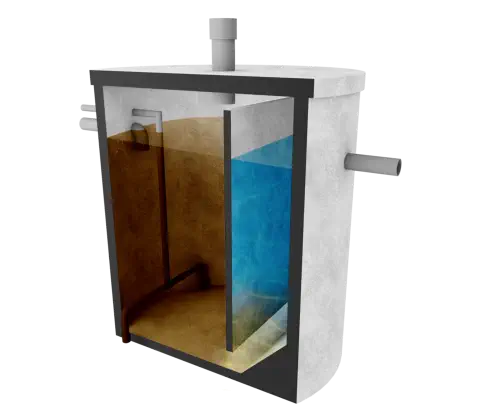
Mo-Dad™ 360
The Mo-Dad™ 360 Wastewater Treatment System is an economical alternative for use in treating domestic wastewater generated by normal household activities. The system consists of a single tank extended aeration activated sludge system which is capable of producing an effluent which meets applicable state discharge standards. This system has been successfully tested in accordance with the National Sanitation Foundation (NSF) Standard 40.
Description:
The Mo-Dad™ 360 Wastewater Treatment System is an economical alternative for use in treating domestic wastewater generated by normal household activities. The system consists of a single tank extended aeration activated sludge system which is capable of producing an effluent which meets applicable state discharge standards. This system has been successfully tested in accordance with the National Sanitation Foundation (NSF) Standard 40.
Raw wastewater flows into the aeration zone of the extended aeration system. Here, the oxygen supplied by the aeration system, along with the organic matter in the waste stream creates an ideal environment for the growth of aerobic micro-organisms. The organisms convert the waste organic materials into gases and additional micro-organism cell material. In addition to supplying oxygen, the aeration system keeps the contents of the aeration zone well mixed to provide optimum exposure of the micro-organisms to the waste materials. The action of the beneficial micro-organisms also results in a significant reduction in pathogenic bacteria.
After the raw wastewater is treated in the aeration zone, the mixture enters the clarifier where quiescent conditions enable separation of the micro-organisms which are returned to the aeration zone, and discharged of treated wastewater through the tee pipe assembly. Effluent may be discharged to a ditch or to a new or existing drain field, whichever is required by your local health official.
Mo-Dad™ 360 Wastewater Treatment Systems meet or exceed all effluent water quality requirements as set forth by the NSF/ANSI Standard 40.
